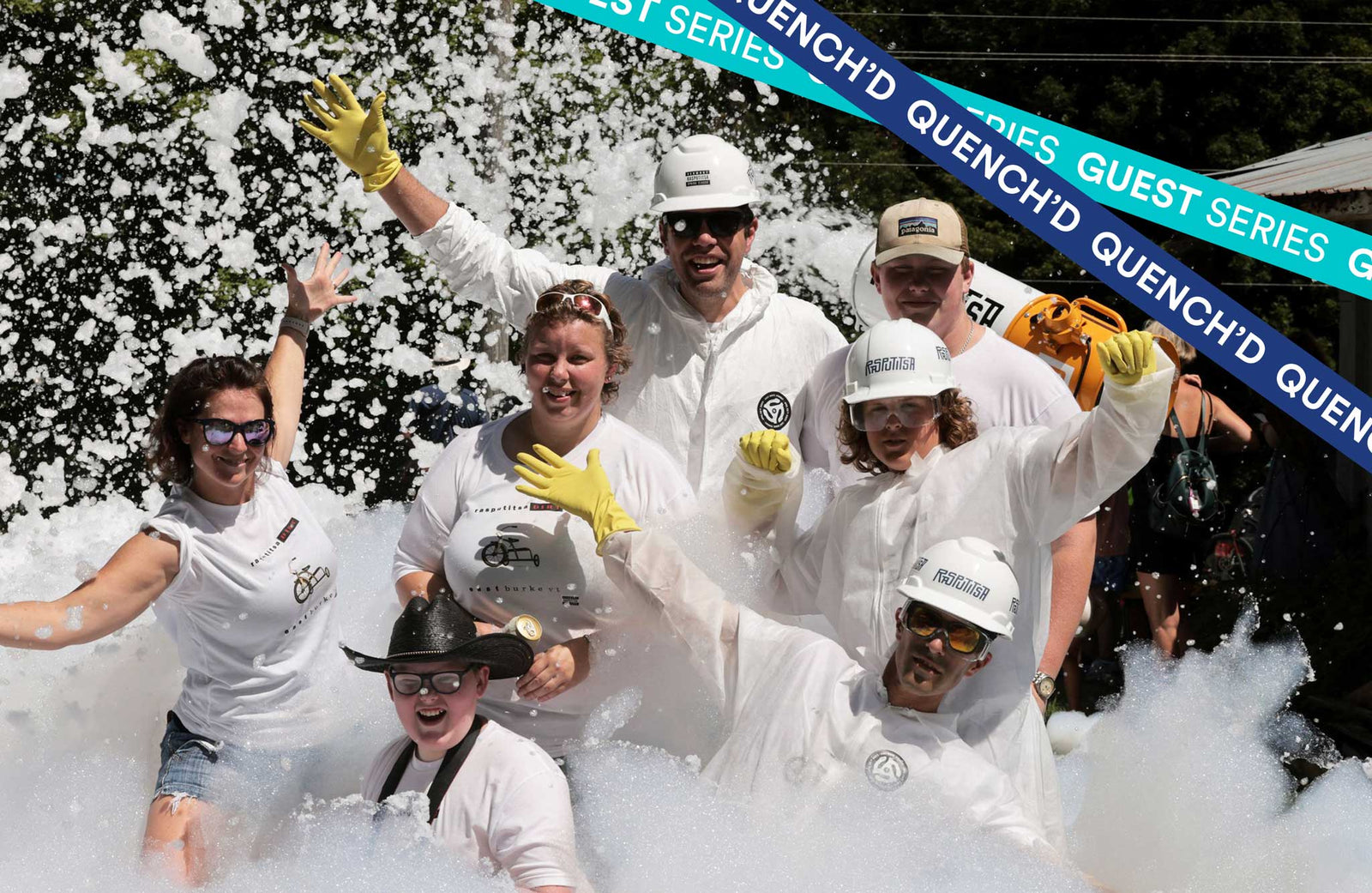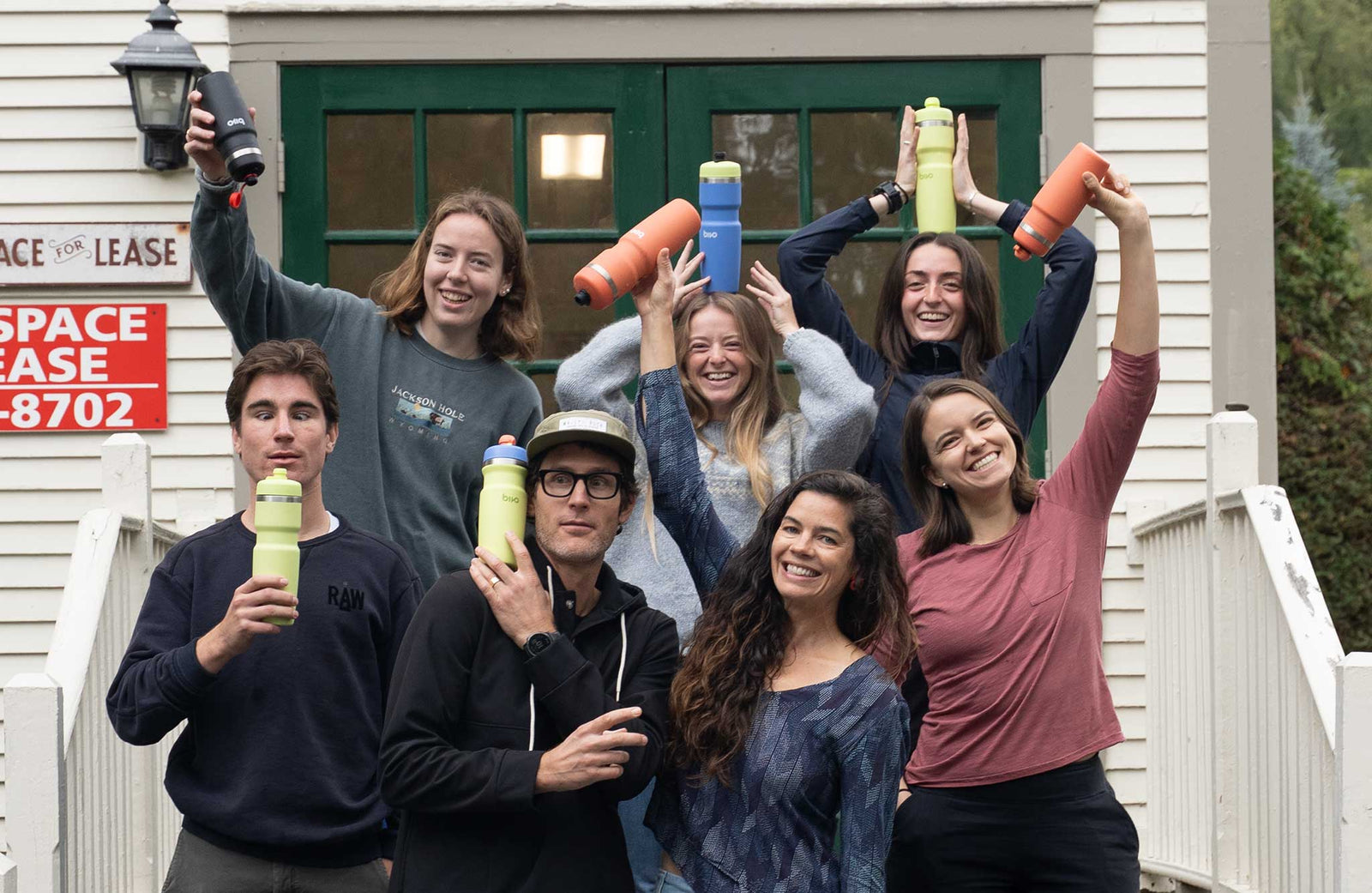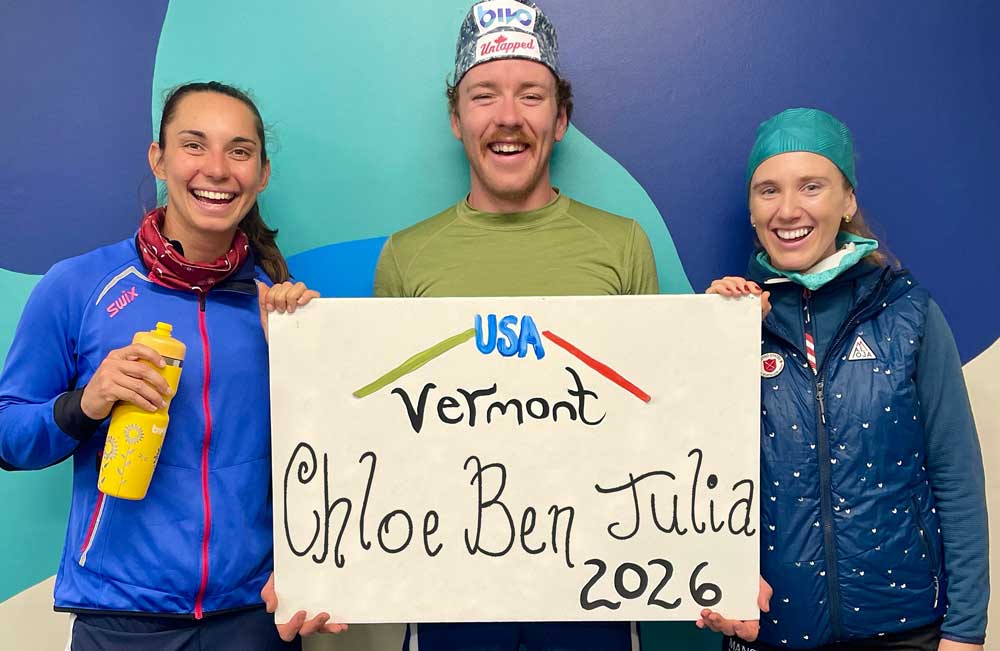Header image courtesy of Rasputitsa
Today's edition of Quench'd features Heidi Myers. Heidi co-founded Rasputitsa, the notorious gravel race held in Northern Vermont, which is happening this weekend! Good luck riders and thank you Heidi for your story today.
Bivo team member Sam Noel did the race last year and loved it. Below are a few photos from last year's race!

By Heidi Myers
For more than ten years, we've been organizing gravel cycling events. Reflecting on the period when 'gravel' entered common parlance, I began to notice the term 'community' gaining prominence. While dictionaries offer a broad definition, describing a community as a group of people sharing a common interest, my experiences growing up in Vermont's most rural areas imbue the word with a profoundly different meaning.
For me, 'community' transcends mere shared interests, embodying a deep-seated sense of belonging, mutual support, and a connection to the land and each other as tangible as the gravel roads weaving through our towns. The essence of the strongest communities lies in their ability to engage in challenging debates, not as a departure from the norm but as an integral part of their fabric. In Vermont, it's common to engage in spirited discussions during Town Meeting—held annually on the first Tuesday in March—only to share a coffee with someone of an opposing view at the local general store the next day. Town Meeting, a form of government unique to New England, enables direct citizen involvement in lawmaking, epitomizing true democracy.
This setting of direct engagement and communal decision-making resonated especially as the gravel cycling scene began to emerge with events like Rasputitsa. As gravel cycling introduced a new paradigm to the cycling landscape, challenging the conventional social norms of competitive cycling, cultivating a community that reflected this ethos of openness, challenge, and direct democracy became crucial. The need was exacerbated by a sea of billboard-like communication, disguised under the pretense of ‘social media.’ A more conversational approach to building community not only embraced the spirit of gravel cycling but also harnessed the foundational values of Vermont's Town Meeting tradition, fostering a unique space where every voice could contribute to shaping the sport and the community. As we grew, it became evident that our intentions lay in creating a community, not an audience. An audience implies very much a one-way communication, centering around a brand or an organization. A key difference is that in a community, people are contributing, not just listening. And therein lies the biggest value of community — empowering people to contribute their ideas, support, promotion, and content.
We never wanted it to be all about us. Our mission was about all bikes, all people. And we expressed this through the dozens of events we would personally volunteer for every year. It wasn’t only important for us to sell our event but to lift all events within our region. It also encouraged us to be very courageous. We realized that if we wanted to host a space that invited all and listened to all, we had to inspire others. So, we started being courageous with our voice and listening to others. Our perspective wasn’t always right, and we’ve learned so much from civil discourse. But at the same time, we never removed a single comment from our Instagram page. We held space for all. We spoke our truths, but we also posed questions and listened to every perspective. We also were quick to apologize when members of our community challenged or changed our point of view. Importantly, we realized that not everything is for everybody. And we never feared our audience or its contraction. We still firmly believe that larger isn’t necessarily stronger.
Incorporating diverse perspectives into the very fabric of our community has been a deliberate and vital part of our ethos. This commitment to inclusivity and representation manifested in various ways—some overt, like hosting a Pride shake-out ride or organizing focus groups for women to ensure all voices were heard and honored. Yet, perhaps the most profound illustration of our dedication to embracing diverse viewpoints lies within our artist collection initiative.
In collaboration with Bivo over the past two years, we've taken a unique approach to celebrate and visualize the essence of Rasputitsa through the eyes of creatives. Each year, we've invited five artists to interpret and graphically capture the spirit of Rasputitsa, offering them a platform to share their unique visions and interpretations of the event. This initiative not only enriches our community's visual and cultural tapestry but also underscores our belief in the power of art to convey the multifaceted experiences and emotions tied to Rasputitsa, fostering a deeper, more inclusive dialogue around our shared passion for cycling.

The range of the artists is wide and unique, from an Indigenous artist to a 13-year-old, and everything in between and outside. Again, we valued a community. Our intentions were rooted in varied perspectives, not just in producing a T-shirt for added sales. It’s never been about sales. It’s always been about people. And with that, we’ve allowed people to navigate in and out. We often receive notes from riders unable to make this year’s event, ending their needless apologies with statements like, "So thankful for the community you created ![]() ."
."
What we've achieved surpasses anything I could have initially envisioned. We've fostered a vibrant community—a living, breathing entity where individuals seamlessly blend into a shared space, united by more than just location or event. This community's resilience is such that, even if Rasputitsa were to conclude, the spirit and connections we've nurtured would undoubtedly persist. Achieving this level of enduring impact signifies that we've done something truly timeless.
Rasputitsa has evolved far beyond the confines of a mere cycling event. It's become an enduring narrative, woven from the voices and stories of every rider whose life it has touched. This narrative continues to grow, enriched by the enthusiasm of newcomers to the sport and fortified by the bravery of marginalized riders who find strength and voice within our ranks. Rasputitsa's legacy is not just in the ride itself but in the lasting imprint it leaves on the community—a testament to the power of shared experiences and collective resilience.
Building a community rather than merely gathering an audience involves creating a space where members feel connected, valued, and engaged in meaningful interactions. Here are five strategies to cultivate such a community:
1. Foster Open Dialogue and Participation
Encourage members to share their thoughts, stories, and experiences. Platforms that facilitate discussions, feedback, and member-driven projects create a sense of belonging and investment. Organize regular meetups, Q&A sessions, and discussion forums where members can engage with each other and with you. This two-way communication is crucial for building a community feeling. In short, listen just as much as you speak.
2. Create Shared Values and Goals
A strong community is united by common interests and shared values. Clearly communicate the purpose, values, and goals of the community. For us, this is all bikes, all people, and we’ve been fearless in that pursuit. Engage members in activities that reflect these values, such as volunteer work, advocacy, or group projects, to deepen their sense of connection and purpose.
3. Celebrate Diversity and Inclusivity
Embrace and celebrate the diversity within your community. Make inclusivity a priority by creating a welcoming environment for all members, regardless of their background, experience level, or perspectives. Highlight stories of members from varied backgrounds to show that everyone’s contribution is valued.
4. Provide Value and Education
Offer your community something more than just a space to gather. Provide educational content, workshops, and resources that help members grow both personally and professionally. A women’s focus group that we organized for Specialized Bicycles, though years back, is still relevant today. It not only added value to their participation but it also encouraged them to contribute their knowledge and skills back to the community.
5. Recognize and Empower Members
Acknowledge the contributions of community members through recognition programs, highlighting member achievements, or providing platforms for members to showcase their work. Empowering members to take on leadership roles or lead projects not only enriches the community but also fosters a sense of ownership and pride in its success.
Building a community is an ongoing process that requires commitment, openness, and a willingness to listen and adapt to the needs of its members. It’s kind of the Vermont way.










Leave a comment (all fields required)